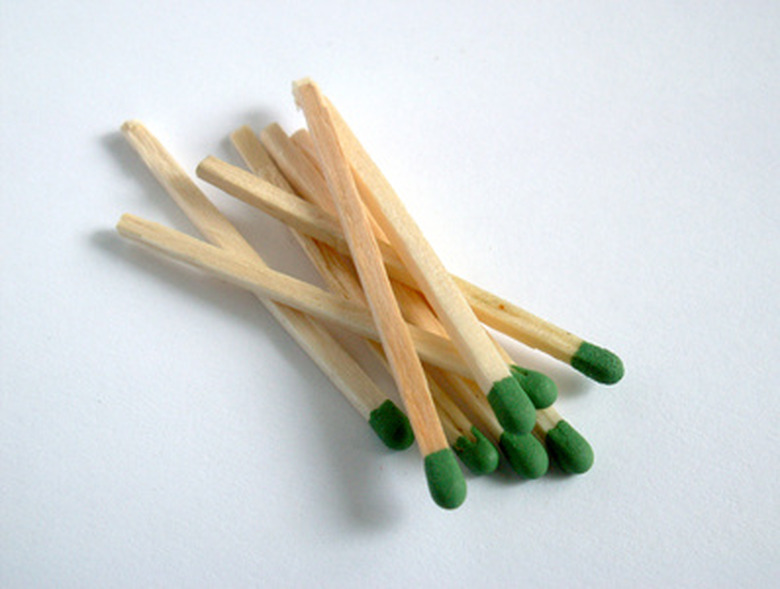How To Make A Homemade Match
Until the mid-1800s, lighting a fire was a painstaking and frustrating process. Tinder—shredded wood pulp, dried grass or wool—had to be ignited with sparks created by striking a coarse stone against steel then stoked with oxygen into a small flame until hot enough to light firewood. Matches were an improvement but often dangerous, because they were made with highly combustible yellow phosphorus. The safety match was invented by a Swedish professor in 1844 and is still in use today. You can make your own strike-anywhere matches, but exercise the utmost caution: the chemicals used to make them are extremely hazardous.
Step 1
Preheat your oven to 150 degrees F.
Step 2
Cut your dowel rods into matchsticks by nicking with a small knife and snapping into 2- to 3-inch lengths.
Step 3
Mix a small amount of potassium chlorate with white glue in a Pyrex or Kimex beaker to create a thick paste. The ratio is not important, so long as the mixture does not drip.
Step 4
Dip the end of each matchstick into the potassium chlorate mixture.
Step 5
Set the matches on an old pan, keeping the paste-covered tip off the pan's surface by resting each match against a length of dowel.
Step 6
Bake your matches for two hours or until the potassium chlorate paste hardens.
Step 7
Make a paste of white glue and red phosphorus in a new Pyrex or Kimex beaker, and stir gently. Do NOT use the beaker in which you mixed the potassium chlorate paste; the two chemicals are explosively reactive and, if combined, can blind, disfigure or even kill you.
Step 8
Dip the baked head of each match in the second paste, and set it on the pan again.
Step 9
Bake the matches for another two hours. When the second paste has hardened and cooled, you can ignite your homemade match on any surface.
Warning
Potassium chlorate and red phosphorus are extremely reactive. Exercise the utmost caution when working with the two chemicals, and ensure they are kept separate.\nAlways wear safety eye goggles, work gloves and an apron when working with volatile chemicals.\nDo not mix chemicals in regular drinking glasses or any beaker not labeled \"Pyrex\" or \"Kimex,\" as they can shatter or explode in the event of a chemical reaction. Pyrex borosilicate glassware is resistant to heat and pressure, making it safe for laboratory use.
Cite This Article
MLA
Crawford-Adiletta, Laura. "How To Make A Homemade Match" sciencing.com, https://www.sciencing.com/make-homemade-match-6313358/. 24 April 2017.
APA
Crawford-Adiletta, Laura. (2017, April 24). How To Make A Homemade Match. sciencing.com. Retrieved from https://www.sciencing.com/make-homemade-match-6313358/
Chicago
Crawford-Adiletta, Laura. How To Make A Homemade Match last modified March 24, 2022. https://www.sciencing.com/make-homemade-match-6313358/
